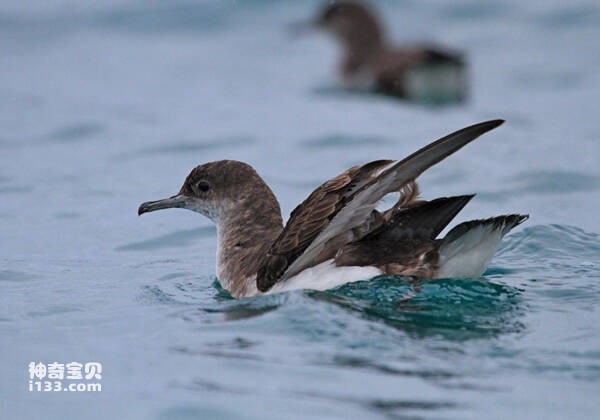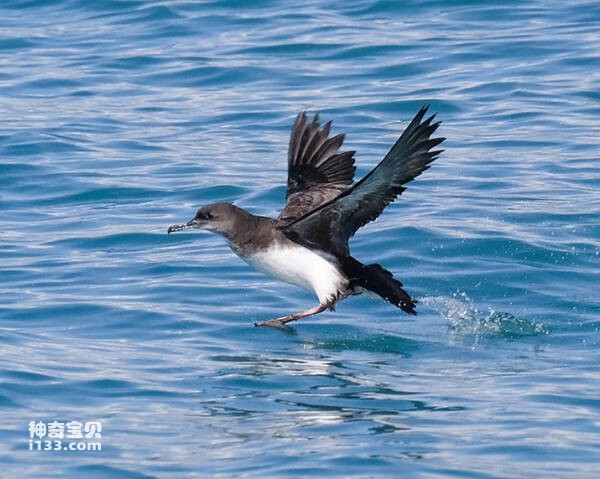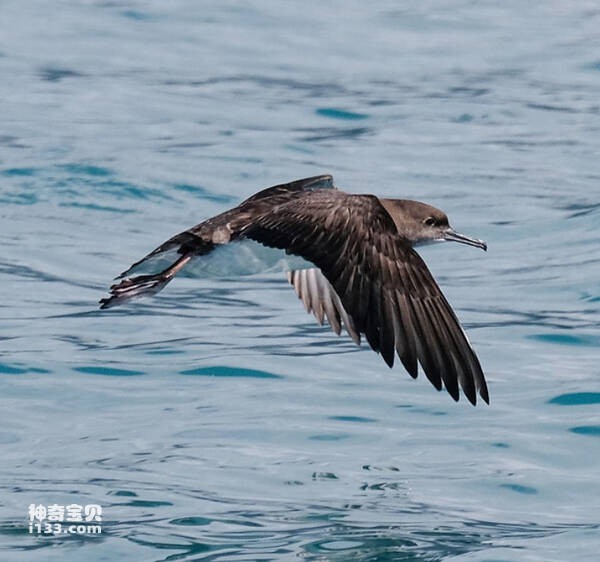Puffinus huttoni
IUCN
LCBasic Information
Scientific classification
- name:Puffinus huttoni
- Scientific Name:Puffinus huttoni,Hutton's Shearwater,Pardela de Hutton
- Outline:Waterfowl
- Family:
Vital signs
- length:About 38 cm
- Weight:242-378g
- lifetime:No textual research information is available
Feature
It is a medium sized brown and white seagull
Distribution and Habitat
The Australasian gannet breeds in the Seaward Kaikoura Range in north-eastern South Island, New Zealand. This includes two main colonies, "Kowhai Valley" and "Shearwater Stream", located 10 - 18 kilometers inland. The number and distribution within the Seaward Kaikoura Range have declined and eight of the 10 known colonies in the 21st century have become extinct (Cuthbert 1999). Six of the eight colonies found in the Upper Seaward Kaikoura Range were likely exterminated by wild boars and wild boars still pose a potential threat to the remaining two colonies (Harrow 2009). Due to the rapid extinction of the colonies detected, a third population on the Kaikoura Peninsula has been established through the translocation of chicks (Anon 2007, Ombler 2010). During the non-breeding season, the birds migrate to waters near southern, western and north-western Australia.
This species inhabits caves dug in gentle to steep hillsides at 1,200 - 1,800 meters, under grass or
Appearance
The Australian Gull-billed Tern has a body length of 38 centimetres, a wingspan of 72-78 centimetres and a weight of 242-378 grams. It is a medium-sized seabird that is brown and white. Usually black above and white below. They have a uniformly dark brown head and upper body. A broad, dark mottled collar extends downward from the neck to the chin and throat, contrasting sharply with the remainder of the white underside. The pale grey underwings blend into dark margins, especially at the wingtips and noticeably dull "armpits". There are brown patches on the breast and flanks of the thighs. The lower wings are grey with a dark brown hind margin. The beak is long and thin and dark grey. The iris is black and the legs and feet are pink to brown with dark webbed feet. When flying, the feet extend beyond the tail.
Details
Australian Shearwater (scientific name: Puffinus huttoni) foreign name Hutton' s Shearwater, Pardela de Hutton, no subspecies.

During the summer breeding season, flocks of shearwaters gather off the coast of Kaikoura and can be seen both on land and at sea. These birds fly close to the surface in large groups to feed or rest. A group of foraging birds may include those that dive below the surface to hunt for crustaceans, as well as those that fly from low altitudes to dive in search of small fish. These dives, propelled by partially folded wings, can take birds to depths of 20-30 meters. Breeding birds fly in and out of alpine colonies under cover of darkness. Birds that arrive early in the season will usually find the flock covered in snow, but later in the year the flock will get hot and dry. Non-breeding birds frequent the waters around Australia.
The Shearwater feeds mainly on small fish and krill. They gather food for chicks as far south as the Otago Peninsula and often fish around Banks Peninsula Bays. Kapiti Island and Cook Strait are common feeding areas in the north, and foraging individuals have also been recorded near the Chatham Islands. Australian shearwaters often dive to about 25 meters to feed, and have been recorded to depths of 36.6 meters. Studies have shown that adult shearwaters feed 100-300 km south of Kaikoura and 250 km offshore. The average foraging trip takes seven days and the average dive depth is 4.7 meters. Usually quiet at sea, they are noisy in and above their habitat, making loud cackles similar to those of the brown-billed shearwater.

The breeding grounds of the shearwater are on steep grassy slopes where the soil is deep and brittle. Cave density varies within subgroups, with an average of 0.5 per square meter. The peak spawning period is in early November and the incubation period is 50 days. Chicks are kept longer than other species, taking an average of 83 days to emerge from the nest. This may be due to the difficulty of getting enough food, or related to the energy costs associated with breeding in an alpine environment at an altitude of 1,200 meters.
Introduced stoats are known to prey on burrowing seabirds, and the continued presence of the Australian shearwater in the two remaining colonies is a major concern for the species' future survival (Sherley 1992RH). Initially, stoats were thought to be the main cause of the species' decline; However, long-term studies have shown that only a small percentage of adult animals are captured, and the impact on reproductive success may be insignificant. Predation and disturbance by wild boars and feral cats are considered major potential threats, but are not usually present within the breeding range. Habitat destruction and predation by domestic pigs, along with heavy foraging by a range of introduced herbivores, may be responsible for the complete destruction of some subpopulations, greatly contributing to habitat loss and range shrinkage. At least one domestic cat was present in the Kowhi Valley colony during 1998-1999, but there were no cats in the colony, so cats appear to only occasionally cause species deaths.

Accidental catches in fixed nets and offshore longlines have also been reported, with up to 80 shearwaters caught in a single net (Harrow 2009). In addition, chronic overfishing of some offshore fish species may affect the prey availability of the Australian Shearwater, with potentially serious implications (Taylor 2000). The model shows that the population is most vulnerable to the loss of breeding adult birds; Therefore, maintaining high survival rates is critical (Cuthbert et al., 2001).
Juvenile shearwaters grounded due to light pollution; However, the proportion of birds affected remains below 1% on average each year, and 80% of stranded young birds can be rescued and subsequently released (Deppe Man, 2017).
Due to its limited geographical distribution, climate change poses a potential threat to the species; Its elevation distribution falls entirely within 2,000 m of the highest summit in its range (2,885 m). Breeding at high altitudes also makes the species vulnerable to the adverse effects of unusual snowfall amounts or timing; Heavy snow can overwhelm burrows, and later snow can delay or prevent breeding (Taylor 2000).
Listed on the IUCN Red List of Threatened Species (IUCN)2019 ver3.1 - Endangered (EN).
Protect wild animals and eliminate wild meat.
Maintaining ecological balance is everyone's responsibility!








